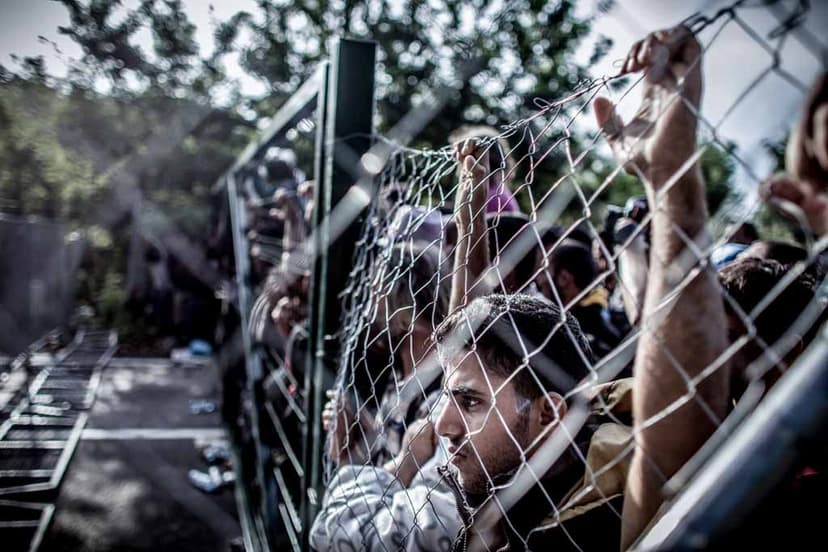

V24 in Brussels: Merkel’s open-door policy, €20,000 fines for refusal, and Eastern Europe’s pushback. Watch our investigation into the EU migration crisis and uprising.
Adam Starzynski
Mar 22, 2025 - 2:20 PM
Share


In 2015, at the height of the Syrian Civil War, then-German Chancellor Angela Merkel opened Europe’s doors to migrants, declaring, “Wir schaffen das” (“We can handle this”). This decision triggered the most significant migration crisis Europe has ever seen and disrupted the EU’s legal framework for asylum claims.
By inviting migrants into Europe’s welfare systems, over a million arrivals were recorded that year alone. Human traffickers profited, violence erupted, and tragic images, such as the lifeless body of Alan Kurdi on a Turkish beach, flooded global media.
Nearly a decade later, despite efforts to downplay the consequences of this policy, little has changed. Millions continue to try to reach the West, and within the European Union, a left-wing and centrist majority is now seeking to address the problem with a new Migration Pact.
We visited the European Parliament to understand why Europe is pursuing this new Migration Pact and to hear politicians’ views on its burden-sharing scheme. Under the pact, member states can either relocate asylum seekers, provide operational support, or make a financial contribution, set at around €20,000 per person, if they choose not to take in migrants.
The proposal aims to distribute migrants across member states but fails to tackle the root causes of uncontrolled immigration. It threatens financial penalties on countries that refuse migrants, even if those individuals have not reached their borders. Without an upper limit on migrant quotas per country, Brussels effectively holds member states economically hostage to enforce compliance.
Unsurprisingly, this arrangement is deeply unpopular with countries that have long maintained strong border controls, especially Poland.
Poland’s Interior Minister Tomasz Siemoniak highlighted Warsaw’s intake of nearly one million Ukrainian refugees while emphasizing the distinct nature of the migration threatening the Mediterranean’s porous borders: “This is hybrid aggression. People arrive by plane in Moscow and Minsk, are bused to border areas, and are instructed by Belarusian services.”
Poland’s strict migration policy, once heavily criticized under the PiS government, appears set to continue under Donald Tusk. Former critics have grown noticeably silent, conceding that Warsaw’s tough stance was not misguided. Similarly, the Visegrád nations have presented a common front against Brussels’ proposed migration policy changes.
The true intentions behind the Pact seem political. Some in Brussels appear to leverage tensions created by uncontrolled migration to advance a more federalized EU, with diminished national sovereignty.
Many European leaders remain in denial about the scope and nature of the problem. They avoid terms like “illegal immigration” and downplay the realities: migrants entering Europe unlawfully, often paying smugglers, with authorities frequently unaware of their identities. This lack of control empowers traffickers to dictate who crosses into the EU, while rhetoric from leaders such as Ursula von der Leyen envisions a seamless Mediterranean space, effectively open borders between northern and southern shores.
Initial outrage at Hungary’s border fencing in 2015 helped reframe the focus of criticism: as anger spread, it increasingly targeted EU policymaking, which many perceived as tone-deaf to national concerns.

True solidarity cannot be imposed; it must be embraced voluntarily by the people. Enforcing borders is essential not only to maintain order and protect citizens’ security but also to preserve political legitimacy in the eyes of voters.
Poland offers a clear example of how an orderly approach to border control benefits those most deserving of help. By effectively managing its borders, Poland has successfully integrated a significant number of Ukrainian refugees, providing employment and education opportunities.
Similarly, newly elected leaders in countries like Italy and the Netherlands are signaling shifts in both foreign and domestic migration policies. The choices made now will determine whether Europe can balance compassion with control, shaping the continent’s stability and humanitarian future for years to come.
Share
Adam Starzynski
Journalist | Foreign Policy Analyst